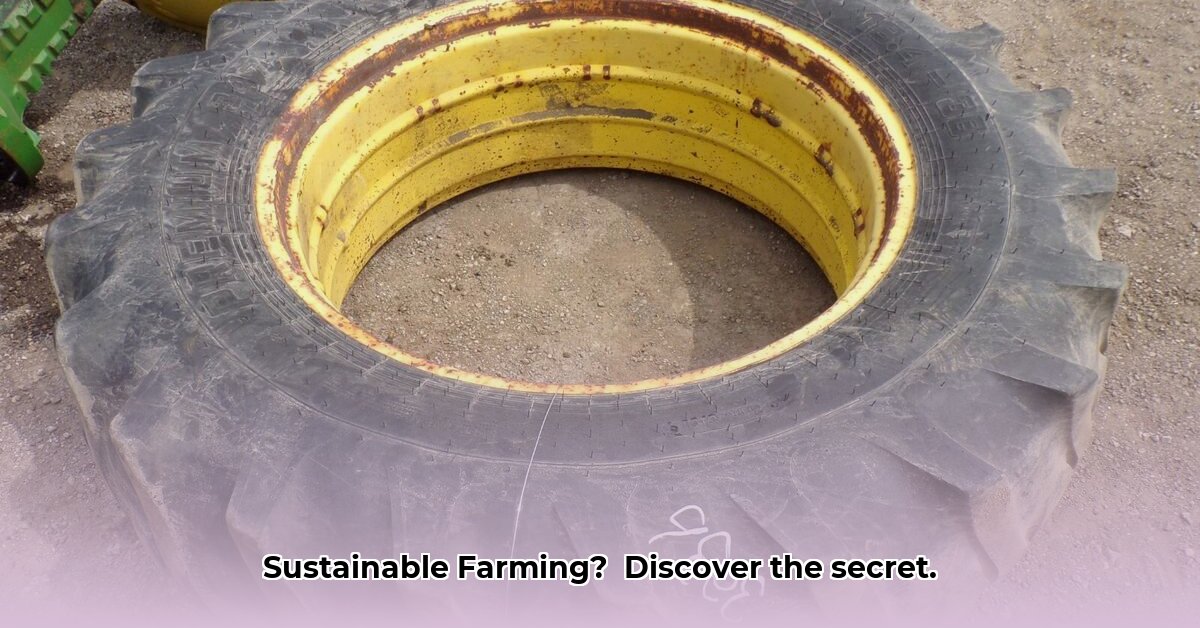
Sustainable agriculture demands smart choices, and one often-overlooked aspect is tractor tire selection. This guide focuses on 18.4 tractor tires—a common size—and details how choosing the right tires can significantly improve your farm's sustainability and profitability. We'll explore the factors influencing tire selection, compare tire types, and highlight sustainable practices for maximizing tire lifespan and minimizing environmental impact. For more information on front tractor tires, check out this helpful resource: Front Tractor Tires.
Understanding the Environmental Impact of Tractor Tires
Tractor tires are more than just rubber; they're the critical interface between your machinery and the soil. The pressure exerted, tread design, and even tire size significantly affect soil health, fuel efficiency, and overall farm operations. Choosing the wrong tires can lead to soil compaction, reduced yields, and increased fuel consumption. But selecting the right 18.4 tires translates to healthier soil, lower operational costs, and a smaller environmental footprint. Don't underestimate the power of this often-overlooked detail in achieving sustainable farming practices.
Key Factors in 18.4 Tractor Tire Selection: A Step-by-Step Guide
Choosing the optimal 18.4 tire for your operation requires careful consideration of several factors. Follow this step-by-step guide to make an informed decision:
Assess Your Soil Type: Soil structure significantly influences tire selection. Sandy soils, for example, benefit from aggressive tread patterns for better grip, while clay soils require tires designed to minimize compaction. The wrong choice can lead to increased soil damage and reduced yields.
Consider Your Crops: Different crops have varying sensitivities to soil compaction. Delicate vegetables require a gentler approach than robust grains. Select tires accordingly to minimize damage and optimize yield.
Evaluate Your Operational Intensity: High-intensity farming necessitates more durable tires capable of withstanding frequent passes and heavier workloads. Consider tire longevity and resilience when selecting tires for demanding operations. Remember, replacing tires frequently is costly and environmentally unfriendly.
Analyze Your Budget: While initial cost is a factor, consider the long-term implications. A higher upfront investment in a durable, fuel-efficient tire can significantly reduce costs over the tire's lifespan. The total cost of ownership—covering purchase, maintenance, and fuel consumption—is far more important than initial outlay.
Understand Tire Technology: Radial and bias-ply tires offer distinct advantages and disadvantages. Radial tires typically offer superior traction, reduced compaction, and better fuel efficiency, but come with a higher initial cost. Bias-ply tires are more economical initially, but tend to exhibit higher compaction and lower fuel efficiency over their operational life. The best choice depends on your specific needs.
Tire Types: Radial vs. Bias-Ply
The selection between radial and bias-ply tires is crucial. Here’s a comparison:
| Tire Type | Advantages | Disadvantages |
|---|---|---|
| Radial | Superior traction, reduced compaction, longer lifespan, improved fuel efficiency | Higher initial cost |
| Bias-Ply | Lower initial cost | Increased compaction, shorter lifespan, lower fuel efficiency, reduced traction |
"The choice between radial and bias-ply tires hinges on a cost-benefit analysis," says Dr. Emily Carter, Soil Science Professor at the University of California, Davis. "While radial tires have a higher upfront cost, their long-term fuel efficiency and reduced compaction often translate into greater savings and environmental benefits."
Long-Term Sustainability: Tire Lifespan and Responsible Disposal
Sustainable tire management extends beyond initial selection. Regular tire pressure checks, rotations, and proper maintenance significantly extend their lifespan, reducing waste and saving money. Moreover, responsible disposal—through tire recycling programs—is crucial. Failing to recycle contributes to landfill burden and environmental pollution. Explore and utilize available recycling options in your area.
Conclusion: Investing in Sustainable Farming Practices
Choosing the right 18.4 tractor tires is a critical decision for sustainable farming. This choice affects not only your farm's productivity and profitability but also its environmental footprint. By carefully considering the factors outlined above, and prioritizing long-term sustainability, you can minimize soil compaction, optimize fuel efficiency, and contribute to a healthier planet. Remember that responsible tire management is not only financially prudent but also environmentally essential. This isn't merely about tires; it's about investing in a better future for agriculture.